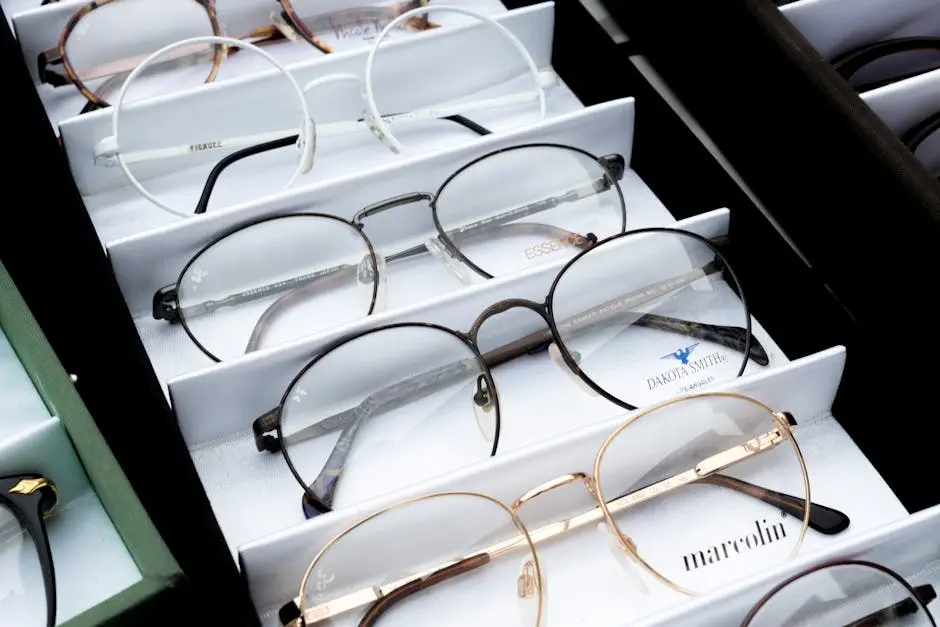Progressive lenses can revolutionize the way you see the world, offering a seamless transition between different vision requirements. In this guide, we’ll navigate through the essentials of progressive lenses, helping you make informed choices for your eye care needs.
What Are Progressive Lenses?
Progressive lenses are multifocal lenses designed to provide a smooth transition from distance to near vision. Unlike bifocals, they have no visible lines and offer a more natural visual experience.
One of the striking features of progressive lenses is that they cater to the varying visual demands of our everyday lives. For instance, they help you focus on the television, read a book, and even use your smartphone without the need to constantly switch glasses.
Moreover, progressive lenses are tailored to individual prescriptions, accommodating unique vision requirements. This customization enables them to be an effective solution for individuals who need vision correction for multiple distances.
How Do Progressive Lenses Work?
These lenses incorporate multiple prescription strengths into one lens. The top part is for distance vision, the middle section is for intermediate vision, and the bottom portion is for close-up tasks, allowing your eyes to naturally adjust as you shift your gaze.
The seamless transition between these zones is what makes progressive lenses so effective. Rather than having a stark separation between different visual perspectives, the gradual change allows for smoother focus adjustments, which can be especially beneficial in dynamic environments where you might be looking at screens or conversations at various distances.
This design minimizes the distortion that can sometimes occur with traditional bifocals, where the change between areas can be abrupt and jarring. Adapting to progressive lenses might take a little time, but the benefit of natural vision is often well worth it.
Benefits of Wearing Progressive Lenses
Progressive lenses offer various benefits, such as improved vision at all distances, a more youthful appearance due to the lack of lines, and increased comfort during daily activities.
Additionally, they eliminate the need for multiple pairs of glasses. Gone are the days of fumbling through your bag for different prescriptions while on the go. With progressive lenses, everything you need is in one convenient package, simplifying your daily routine.
Another noteworthy advantage is that they can enhance your peripheral vision. When looking to the side, your vision is clear, giving you confidence whether you’re driving or enjoying outdoor activities. This widespread adaptability truly makes them a favored choice among many.
Choosing the Right Progressive Lenses for Your Needs
Selecting the right pair involves understanding your specific vision needs, work habits, and lifestyle. Factors like lens material, coatings, and fitting will also impact your overall experience.
Before making a decision, it may help to consult with your eye care professional. They can assess your individual vision needs and recommend the best progressive lens options tailored to your lifestyle, whether you work at a computer all day, enjoy reading, or frequently engage in outdoor activities.
Don’t forget to consider lens coatings that can provide additional benefits. Anti-reflective coatings, for example, can minimize glare from screens and bright surfaces, enhancing your vision and overall comfort. UV protection is also vital, especially for those who spend considerable time outdoors.
Common Misconceptions About Progressive Lenses
There are many myths surrounding progressive lenses, such as difficulty in adapting or the belief that they are only for older adults. This section will debunk these myths and clarify the truth.
One common misconception is that users will experience a constant blurry vision. In reality, while adjustment may be necessary, most people adapt comfortably with the progressive design, often within just a few days. It’s all about giving your eyes time to get used to the smooth transition.
Another myth perpetuated by common perception is that progressive lenses are too complicated or just for seniors needing serious vision adjustments. However, progressive lenses can be beneficial for younger individuals, especially those starting to experience presbyopia in their late 30s or early 40s.
Tips for Adjusting to Progressive Lenses
Transitioning to progressive lenses may take some time. This section will provide helpful tips to ease the adjustment period and maximize your comfort and visual clarity.
Start by wearing your new glasses consistently, even if they seem a bit strange at first. The more you wear them, the faster your brain will learn to interpret the varying lens powers, leading to a smoother adjustment process.
Additionally, try to focus on objects at different distances and let your eyes guide themselves naturally to the correct area of the lens. Avoid tipping your head too much and instead move your eyes when shifting focus to utilize the lens effectively.
Maintaining Your Progressive Lenses
Proper care and maintenance are crucial for ensuring the longevity of your progressive lenses. We’ll cover cleaning techniques and storage tips to keep your lenses in top condition.
When cleaning your lenses, use a microfiber cloth and a lens cleaner specifically designed for eyewear. Avoid using paper towels or clothing as these can scratch the lenses, leading to clarity issues over time.
Storing your glasses in a protective case when not in use is also a wise practice. This preventative measure will help guard against scratches and damage while prolonging the life of your progressive lenses.
Wrapping Up Your Journey to Better Vision
Choosing the right progressive lenses can greatly enhance your vision and comfort. By understanding the different types of lenses available and knowing what to look for, you’ll be well on your way to finding the perfect pair that fits your lifestyle.


